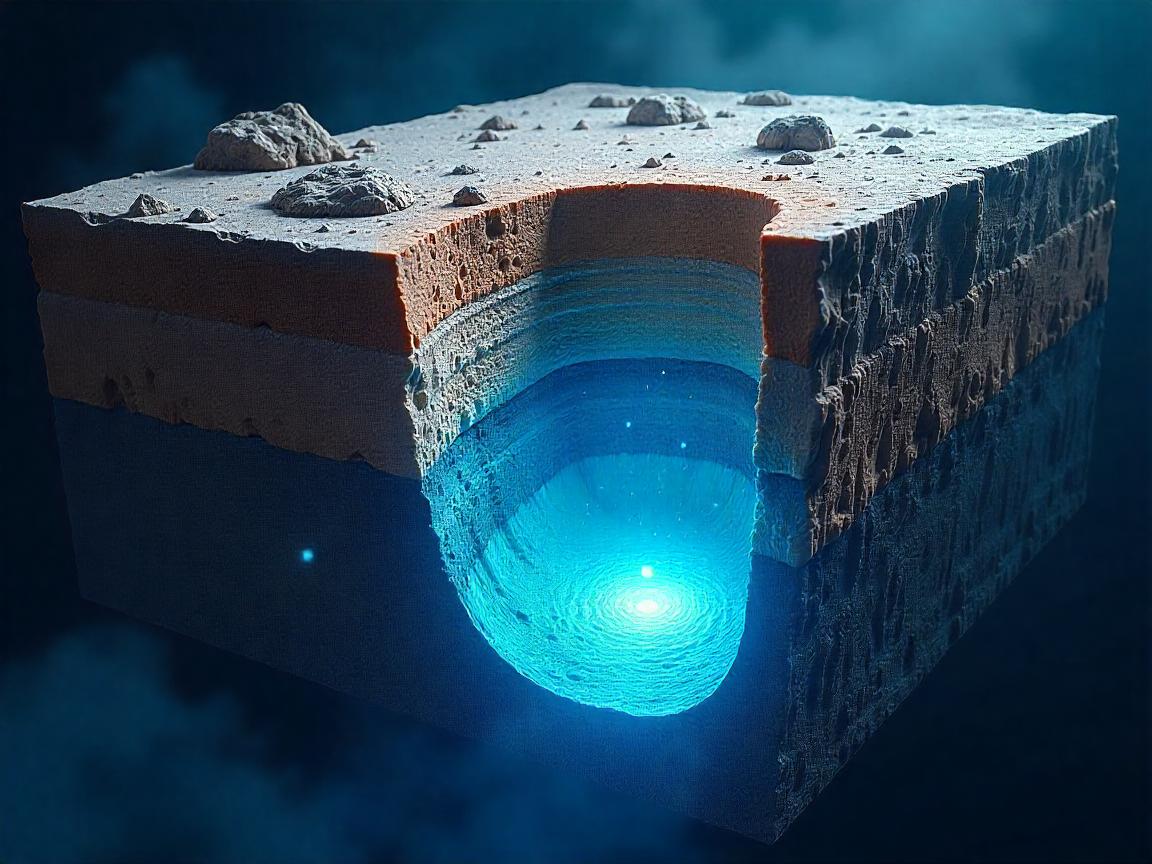
A Vast Water Reservoir Hidden in Earth’s Mantle
Scientists discover a hidden ocean: Just envision a monster ocean capable of swallowing all the continents but it is not on top of the earth Rather it is trapped inside the rocky core of the earth. Researchers studying seismic waves have made Augertudescent discovery that a subterranean ocean has been found trapped in a mineral ringwoodite that contains three times the volume of water than those on the ground in oceans, lakes, and rivers. It is not water talking around here in some subterranean cavern, it is molecular water trapped in the rock, playing the role of enormous sponge 400-700 kilometers under our feet.
How then did we not notice this earlier? The solution is in earthquake waves. When seismic waves are slowed in some areas then it is an indication of water-bearing minerals. Scientists at the University of New Mexico and Northwestern constructed a patchwork of hundreds of earthquakes around the world to give a worldwide picture of hydrous minerals in the transition zone between the mantle and upper layer. Should this water ever be unleashed, the whole planet would have been engulfed in a 300-meters-high liquid, equaling to heavily submerge even the Mariana Trench to be a puddle.
Where Did This Underground Ocean Come From?
The question evoked by the discovery is amazing, how did all that water get down there? Two of the theories that lead are dramatic in their implications.
- Primordial Water: Other researchers believe that this supply originated millions of years ago; during the rough childhood, asteroids rained down on the young earth, leaving it flooded after it had hit water-laden asteroids. Part of that water, rather than escaping into space, could have been chemically bound up (trapped) in mantle minerals, where it would be sequestered over billions of years.
- Recycled Ocean Water: Some also hold that tucks keep pulling the surface water into the ground continuously. When oceanic plates are forced beneath other plates, they bring with them minerals loaded with water which are rich, under the extreme heat and pressure prevailing in the mantle turn to be ringwoodite- a mineral that has the capacity of storing 1-3 percent of its weight in water.
Case Study: The Role of Mariana Trench
Perhaps one of the most important aspects of this underworld water cycle, there is the deepest spot on earth, the Mariana Trench. During the subduction of the Pacific plate into the Philippine plate it also brings water to the mantle a possible source of this deep reservoir. Some 2023 research in Nature Geoscience calculated that subduction zones may be transporting billions of metric tons of water into the mantle per million years.
What Does This Mean for Earth—And Beyond?
The finding is more than a geological oddity, it might even change the way we look at the past of water on Earth and a potential future of life on the other planets.
- Heavywater? Assuming that mantle water trickles upwards to the surface through volcanic activity, this may allow the explanation of why the oceans of the earth have not yet dried up despite millions of years.
- Implications of Exoplanets: Given the fact that the planet earth has managed to store water deep inside the Earth, are there possibilities that planets like Mars or Venus were able to store water as well? The next mission of NASA, the Europa Clipper, will now search on the Jupiter moon something like these underground oceans.
- Next generation of Deep-Earth Drilling: Though we are not ready to probe such depths yet, high intensity imaging of the seismic data and AIs-powered simulations are providing us with an unprecedented look at what is going on in the depths of our planet.
Expert Insight: A Game-Changer for Planetary Science
As a major participant in this study, Dr. Steve Jacobsen, a geophysicist at Northwestern University, states it blatantly:
“It is not underground lake but water imprisoned in rock. Due to such a reserve that not even many scientists are aware of, the surface of the Earth could have become a desert millions of years earlier. It is a very important part of the puzzle when it came to how planets are able to continue holding water.”
Final Thought: Are We Looking for Life in the Wrong Places?
Scientists have been peering thousands of light years away at exoplanets in search of surface oceans, but what happens when the habitable exoplanets are keeping their oceans to themselves? Assuming that the Earth mantle contains more water than they are on the sea, does that mean that there is life in alien planets on underground reservoirs?
The one thing that is clear is there is more that lies deeper than we may ever think in our planet. And the next time you are on the seashore, go up to the edge and lean way over so that you can look down into the water. And you will see a blue so deep you never knew the color blue could be this blue before. (Remember: it is the blue of three times as much water as there is in front of you.)
